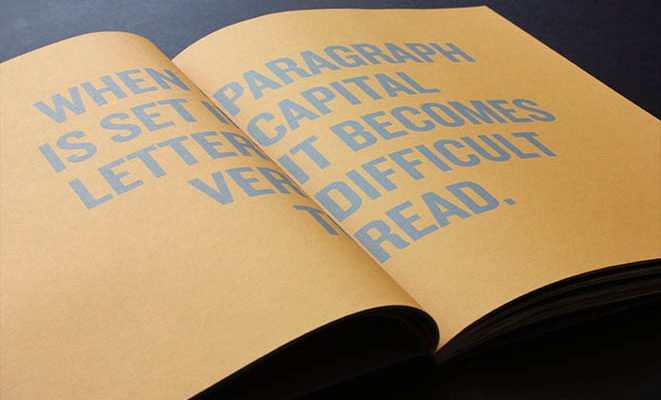
I wonder what it's like to be dyslexic?
A beautiful, design led experience of what it feels like to struggle with reading.
Introduction
People all over the world struggle with reading for a variety of reasons, including dyslexia, lack of education and an unfamiliar language to name a few. People with reading difficulty are often capable of thinking in ways that others aren't and as a result are capable of true greatness, yet these people are often misunderstood and treated unfairly as a result.
Failing to encourage those with reading difficulties in a way that makes sense to them can limit (and in many cases damage) their ability to progress.
Great effort has been made to provide tools aimed at improving a persons reading but very little has been done to give those around them an understanding of what it really feels like to struggle in such a way.
About the book
This book aims to provide the reader with a beautiful, design led experience of what it feels like to struggle with reading.
Please head over to our Facebook page where you can find articles we are being featured in and will also be updating you after the project is over.
For you
Enjoy thumbing through the pages of this book with your favourite cup of coffee. Enjoy the books beautiful typographic theories that are sure to give you a completely different outlook on reading.
Put it on your coffee table, stack it on your bookshelf or pass it on to a friend. If five people pick the book up in it's lifetime, chances are that one of those five will impact positively on another persons life as a result, whether they know it or not.
For your business
As stated in the Equality Act 2010, disability discrimination legislation prohibits discrimination against disabled people in employment and in the provision of goods and services. This includes those with dyslexia.
With or without legislation, many businesses require staff and customers to read a great deal – whether it be T&C's, returns policies, reports, daily emails… the list goes on.
Helping staff to truly understand what it might feel like for a colleague or customer to struggle with reading will greatly improve your business.
For your school/college/university
The impact of dyslexia is rarely seen in greater force than in education. Students that cannot learn to read have enormous difficulty reading to learn.
If those around them – be it their teachers, parents or fellow students – can begin to understand what it feels like for them to be face to face with a page of text, the positive impact on their self esteem will be felt for the rest of their lives.
What people are saying…
“An excellent body of research and development that has successfully been translated into the final piece. Thoughtful and considered typography and layout that is quite simple. A joy to look at and read.” – The International Society of Typographic Design
“In Barclay's visionary creation, somewhere between a coffee table book and a textbook, letters morph into shapes which meander, swap places and play tricks on the eye. Frustrating yet fascinating, the book reveals a space between words and meaning where new interpretations of language are possible.”– The Huffington Post
“Barclay's I wonder what it's like to be dyslexic visualizes a variety of typographic theories to plainly—and quite beautifully—portray the experience of reading with dyslexia. Large, simple type is juxtaposed next to short, information rich paragraphs that expound on what it is you're seeing and give voice to the sort of confusion many feel on a daily basis.” – Gizmodo
“This book demonstrates very clearly the range of trials and tribulations experienced by someone struggling to make sense of the written word. In my opinion this is a ‘must have' resource for both parents and professionals wanting to support and understand the difficulties experienced by people trying to master the craft of reading especially in this information-rich world and when literacy achievements in this country are apparently at an all time low.” – Jeannie Low Ying (retired Assistant Principal Educational Pychologist)
“This book should be put on the compulsory reading list for all training teachers in a bid to eradicate the ignorance that still exists towards Dyslexia” – Julie Roche (Deputy Head Principal)
“Through meticulous design that manages to be friendly as well as stylish, Sam has created a publication that is accessible, informative and has filled a very important gap in the design world.” – itsnicethat.com
“In Barclay's book, letters are turned into visual art. In a perfect example of showing instead of telling, words here convey an important, overdue message not through their literal meaning so much as through their imaginatively altered visual structures.” – Fast Company




Comments